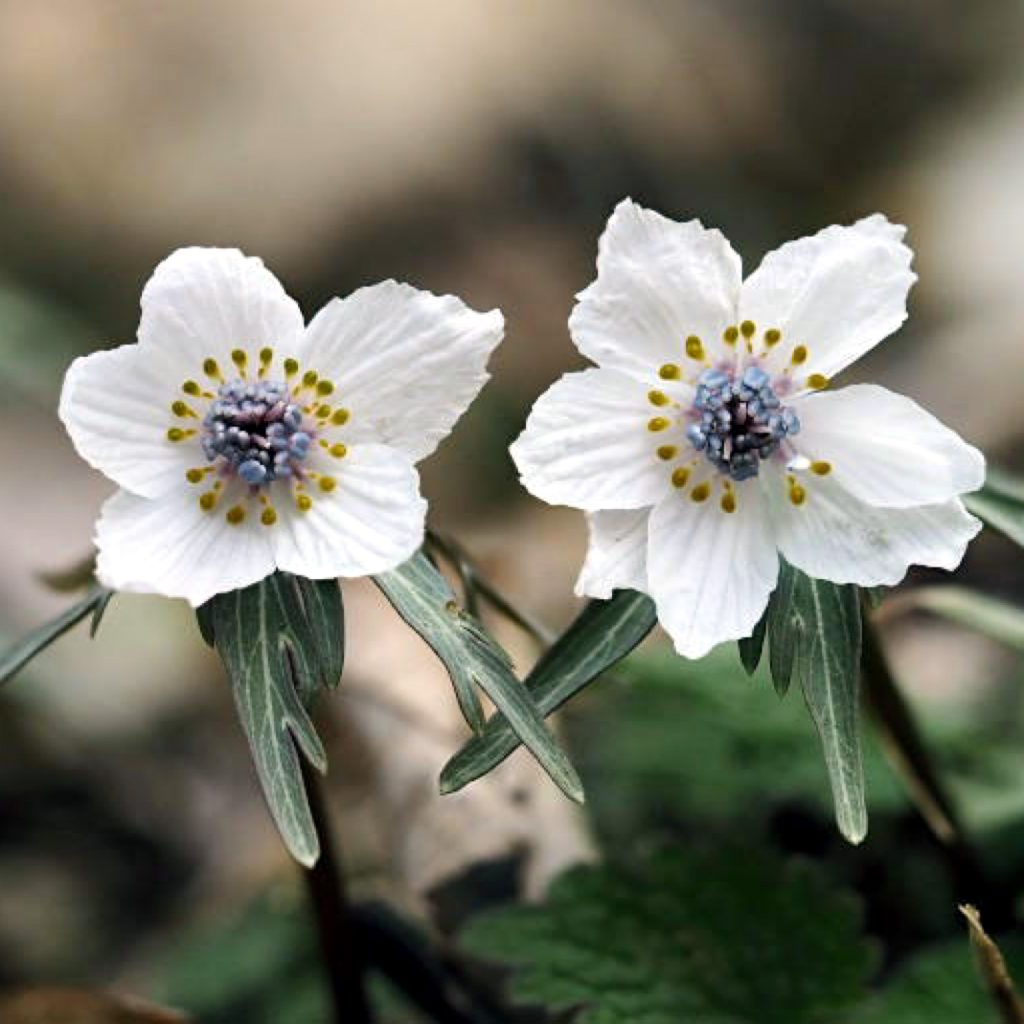
Setsubun is just around the corner. In the mountains and fields west of the Kanto region, a flower known as Setsubun-so, also called the ‘herald of spring’ or the ‘princess of spring,’ begins to bloom. True to its name, it starts blooming around the time of Setsubun, which gives it its distinctive name. However, in the Kanto region, it seems to bloom after Setsubun has passed. Setsubun-so emerges in the dead of winter, its flowers blossom, leaves flourish, and then its above-ground parts wither, entering a dormant phase until autumn. It only shows its face above ground for about three months in a year, and its delicacy and transience make it a beloved and charming wildflower.
Setsubun-so has a height of about 10 cm, and its flowers are small, around 2 cm in size. The flowers themselves are quite unique. What appears to be white petals are actually sepals, while the petals are located inside, resembling yellow, rod-like structures that look as if they are filled with abundant nectar. Numerous stamens are found on the inside, and further inside are the pistils.
The formal scientific name for Setsubun-so is ‘Eranthis pinnatifida.’ The genus name ‘Eranthis’ has its roots in Greek, combining ‘spring (er)’ and ‘blossom (anthos),’ signifying a flower that blooms in spring. In English, it is sometimes referred to as ‘Spring Ephemeral’ or ‘Winter Aconite.’ The latter name, ‘Winter Aconite,’ includes ‘aconite,’ referring to the toxic plant monkshood, suggesting a winter monkshood.
Although Setsubun-so is native to Japan, environmental issues and overharvesting have led to a decline in its natural population. Consequently, it has been designated as a near-threatened species by the Ministry of the Environment.
間も無く節分です。関東以西の山野には、「春を告げる花」「春のプリンセス」とも呼ばれる節分草が咲き始めます。その名の通り、節分の頃に咲き始めるのでその名が付きました。ただ、関東地方では節分が過ぎてから開花する様です。節分草は、真冬に芽を出して花が開花し、そのあと葉を茂らせ、晩春に地上部は枯れて秋まで休眠します。地上に顔を出しているのは1年のうちで3か月ほどで、その可憐さとはかなさが魅力の草花として愛されています。
節分草は草丈が10cm、花の大きさも2cm程の小さな花です。花そのものも、とても変わっています。白い花びらに見えるのは萼であり、花弁はその内側にあって、雄しべのように見える黄色い棒状の、まるで蜜をたっぷり蓄えているように見えるものです。雄しべはその内側に沢山あり、雌しべはさらにその内側にあります。
節分草の正式な学名は「Eranthis pinnatifida(エランティス ピンナティフィダ)」です。属名のEranthisは、ギリシャ語の「春(er)咲く(anthos)」が語源で、春に咲く花という意味を持ちます。英名では「スプリング・エフェメラル(春のはかない命)」とか、「winter aconite(ウィンター アコナイト)」とも呼ばれたりします。「winter aconite(ウィンター アコナイト)」は、aconite=アコニチンが有毒植物のトリカブトの意味で、冬のトリカブトという意味になります。
節分草は日本の固有種ですが、環境問題や乱獲によって自生数が減少したため、環境省に準絶滅危惧種として指定されました。
